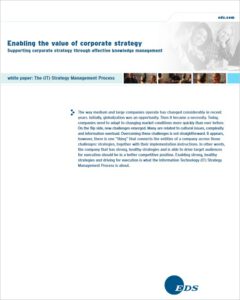The Law of Nature Manifesto: 11 Laws of Nature
Manifesto Positions
1. Laws of Nature

Are present or occur in a system
Are expressed via exact practices when possible, like Mathematics, Temperature and the Periodic System
Many cannot be expressed in exact ways; for example Darwin’s rule
2. What Qualifies as a Law of Nature
Somehow, there appears to be no consistently used expression as to what constitutes as a Law of Nature. For ease of communication with large groups, we use the following:
When something cannot be changed or overruled by human-made constructs, it qualifies as a Law of Nature1
1 Human-made constructs: Methods, theories, paradigms, laws, strategies, processes, IT apps, fixed ways of thinking, technology and so forth

3. We are undeniably all part of Nature, because we are borne by it

We identify and apply Laws of Nature for the betterment of humankind
We ARE Nature
Yet, we treat Nature as something different
Nature does not allow ignoring, changing or overruling relevant Laws of Nature.
These include those Laws of Nature that remain to be identified.
4. Selection Criteria for the Laws of Nature listed below
Provide the highest impact at the lowest costs and risks across areas, fields and subjects
May create a common direction
Make top-down and bottom-up solutions complement each other
Enable both, bottom-up and top-down solutions of high-to-highest impact to get through the system with reliability
Enable projects to get over the Tipping Points where they become practical, executable and their solutions durable (Tipping Point Law of Nature applied)
Highest-Impact Laws of Nature
The following Laws of Nature are expected to be relevant to:
Decision-makers
Experts
Stakeholders
Partners
Collaborators
Beneficiaries
1. Tipping Point Law
When a Tipping Point is crossed, something fundamental changes
Experiences, Examples and Add-ons
Missing this law prevented us from applying various Laws of Nature from physics, engineering, chemistry, mathematics and the like when a first level of complexity was crossed.
This became a standard situation in fields supposed to resolve the colossal problems we face now.
Alternative expressions for Tipping Points are
- Inflection Points
- Phase shifts
Possibilities
Laws of Nature from physics, engineering mathematics, chemistry and the like becoming executable beyond the Level-1 Tipping Point of complexity
Enabling solution seekers in societal, managerial, organizational and health areas to identify and apply Laws of Nature beyond the Level-1 Tipping Point of complexity
2. Capacity Bottleneck Law
When the demand for a resource exceeds its capacity, a tipping point is crossed. Queues build up.
Experiences, Examples and Add-ons
Missing this law beyond the Level 1 Tipping Point of complexity prevented us from recognizing overloaded agendas and information, waiting lists, bureaucratic processes and much more as capacity bottlenecks.
Practices working well before this Tipping Point turned into practices worsening these bottlenecks for 2+ decades.
Available practices
- One word to choose the correct practices
- Natural process flows
- Alternative routes
- Roundabouts for processes
- Flight paths to leave bureaucracy and complexity
See Manifesto Tutorial 2
Possibilities
Applying this law when the bottleneck cannot be calculated mathematically
Recognizing, reducing and/or solving hidden capacity bottlenecks with reliable practices like natural process flows and a simple policy people can remember and apply
For more information, see Manifesto Tutorials 3.2 and 3.3
3. Health Law (as observed)
Nature thrives when the environment is healthy
Over time and even with disturbances like meteors and viruses, Nature develops towards healthy and balanced systems
Experiences, Examples and Add-ons
The environments, organizations and systems we live and work in are all part of Nature
The health of
- People
- Organizations
- Initiatives and projects
- Environments
- Planet
Possibilities
Closing a structural gap in decision-making processes
That is the gap where exact practices like those of mathematics fail as they cannot create reliable outcomes. This is typically the case for situation beyond the Level 1 Tipping Point of complexity.
4. Darwin's Survival Law Extended (proposal)
Survival level 1
Survival of the fittest (Darwin) or
Survival by natural selection (Herbert Spencer, used by Darwin as well)
Survival level 2
Survival by merit and intelligence
Survival level 3
Survival by intelligence being in harmony with Nature
Experiences, Examples and Add-ons
In recent years, Darwin and his survival law have been criticized. We believe this is partially due to missing the Tipping Point Law of Nature. It allows us to add survival levels 2 and 3.
Tipping Point from Survival level 1 to 2:
When intelligence led to the ability to create tools and the tools changed our environments via building houses and early farming
Tipping Point from Survival level 2 to 3:
When intelligence achieves harmony with Nature
Right now, humanity is at the crossroad where it is forced to decide which path to take:
The path of denying the existential threats
Moving on to Survival Level 3
Possibilities
Moving huge funds and resources away from further fueling the colossal problems we face and to enabling Survival Level 2
By:
- Reducing the unnecessary bureaucracy and complexity drastically through applying the Tipping Point, Capacity Bottleneck and Health Laws of Nature
- Requiring improvement, innovation and research projects to
- Be in line with relevant Laws of Nature
- Apply the practices suited for the position against the Tipping Point Law of Nature
- Making non-technical solutions for managerial, organizational, societal, and psychological matters part of innovation programs
- Creating complementary innovation and research tracks for high-to-highest impact innovations and solutions addressing situations beyond Level-1 Tipping Points; these tracks being based on
- Value creation over procedures and traditional ways of thinking
- Einstein-Newton-Darwin practices and practices of other individuals like Rabindranath Tagore and Steve Jobs (smartphone)
- Getting innovation and research projects as well as supporting programs in line with the deadlines set by Nature
5. Growth Law (as observed)
In Nature, there is no indefinite growth
Experiences, Examples and Add-ons
Our economic systems are based on
- Endless growth
- Practices designed for situations prior to the Level 1 Tipping Point of complexity
and demonstrate increasing patterns of Darwin’s Survival Level 1 only
A Level-1 Tipping Point was crossed when the resources we consumed started to exceed what our planet can recreate
With droughts, increasingly violent protests, divided populations and war spreading, we are at the Level 2 Tipping Point of complexity
Possibilities
An economic system based on being in harmony with Nature
By this model:
- Applying
- Relevant Laws of Nature and in particular the Tipping Point, Capacity Bottleneck and Health laws
- Core Human Values & Essential Behaviours (Manifesto Extenvion to Intervention 7)
- Cascading development funding towards social and institutional upgrades such as public health, transport system and education
- Tapping into indigenous knowledge systems to create indigenous economic systems which respond to the local dynamics
6. Break-Into-Parts Law (as observed)
Breaking challenges into parts works well when
- all the parts,
- their dependencies and
- the implications of changes
are understood and addressed accordingly.
When complex problems are broken into parts, they cannot be understood to the level required to solve the whole of a complex problem
Specifically problems involving situations or environments beyond the Level 1 Tipping Point of complexity
Experiences, Examples and Add-ons
A living being cannot be divided into its parts, put together again, and expected to be alive again
The same or something close applies when the environment or problem is beyond the Level-1 Tipping Point of complexity
Complexity as experienced by people in the middle of a complex environment:
- Implications of a change cannot be foreseen
- The dependencies between parts cannot be fully understood
- Solved problems re-open
- The ‘unexpected unexpected’ keeps popping up despite extensive efforts to prevent it (a discovery from project management)
- Environments change quicker than traditional documentation, processes and IT-apps can be updated
- Nobody feels responsible for addressing the tough parts, root causes located outside the addressed parts or the whole of a complex problem. Too many obstacles remain unresolved.
Possibilities
Solving many if not most complex problems by switching to
- (Re-)learning how to apply relevant Laws of Nature beyond the Level 1 Tipping Point
- System-level approaches via The Einstein-Newton-Darwin practices (see Manifesto Tutorials 1 and 2, as well as related recordings under Fresh Thinking at this webpage’s menu)
- Rapid whole-system changes by intervening where the high-to-highest impact can be made at the system level and by keeping costs and risks low
Various wicked problems becoming solvable
Creating highly effective solutions and far-reaching spin-off effects by making break-into-parts and the Manifesto’s system approach complement each other
Example: The Law of Nature Manifesto
7. Simplification Law (as observed)
When a problem or challenge is complex, the effective solution may need to be amazingly simple. However, a package of (simple) solutions complementing each other may be required.
The package must be designed to get over the Tipping Point where it becomes practical, executable and durable.
A simplification activity in a box easily creates more damage at the system level than the simplification’s value inside the box.
Experiences, Examples and Add-ons
Examples of simple solutions versus standard practices
- The attentiveness created through the 17 SDGs – Partnership For the Goals versus ‘not my problem’
- Two Laws of Nature (Tipping Points and Capacity Bottlenecks) led to the treatments that delivered the needed results after Health Services had given up: See also Manifesto Tutorials 1 and 2
With simplification pressures, people inside the box argue “We focus on what matters to our box or on what is proven”. Consequences observed:
- The box stopped delivering what groups outside the box needed to make better decisions or do their jobs
- Practices and solutions working well but unprovable via exact practices were stopped
- Those outside the box had to initiate corrective actions. Different groups made different decisions. In our connected world, this fueled the exponential growth of non-productive work, bureaucracy, and complexity.
- Alternative but effective treatments for health matters (physical, mental, organizational, etc.) disappeared or remained excluded from insurance packages and organizations
Possibilities
Creating system-wide simplification by way of the Einstein-Newton-Darwin practices and the Manifesto
8. Newton's Third Law of Motion Extended for Complex Environments (proposal):
For every action, there is an equal and opposite reaction
Complexity Extension
When the Level-1 Tipping Point of complexity is crossed, the opposite reaction may differ and it may take time for it to unfold. From some point onwards, it may grow exponentially
Experiences, Examples and Add-ons
The propulsion of the rocket takes place by burning fuel. This creates a push on the front of the rocket, generating an equal and opposite push on the exhaust gas backwards (Source: Smithsonian National Air and Space Museum)
In organizations and society, we are bombarded by information, bureaucracy and complexity demanding high levels of energy to process and respond. We experience how practices and actions that worked well earlier now fuel opposite reactions like lack of interest, opposition, violent protest, divided populations and conflict. Sadly, we have lost the ability to build the ‘rocket’ that works for complex matters
Possibilities
A ‘rocket-like’ approach that responds to the negative and positive outcomes with equal focus to incrementally solve situational challenges
Examples
- The Law of Nature Manifesto
- The United Nations SDGs
9. Attractor Law
An “attractor” is a unifying trend to which a dynamic system evolves over time and then stays there, regardless of any outside disturbance
Source: Wikipedia, Dutch Version
Experiences, Examples and Add-ons
From the perspective of solving complex problems with countless disturbances created across the globe1, we observe the following patterns:
- The systems stayed where they were or collapsed to levels we thought to have left behind us
- Disturbance created towards different and even opposite directions fueled confusion, disbelief, shame and blame, opposition, and downward spirals
1 Marginal improvements, in-the-box solutions, movements, ‘follow the science’ while science-based solutions are too many years away or others may have effective solutions, and so forth
Possibilities
Choosing to be in unity with Nature is a powerful attractor to move us away from problem-fueling into problem-solving activities, decisions and projects
By starting from the Laws of Nature providing the high-to-highest impact at the lowest costs and risks
10. Possibility Law (as observed)
In Nature, there is an indefinite number of possibilities as to how life can develop
Extension:
Since the colossal problems we have created are part of Nature, countless solution possibilities can be expected to surface
Experiences, Examples and Add-ons
Sadly, the systems we created and fixed ways of thinking prevent us from exploring the high and highest-impact solution possibilities available today.
Possibilities
Unleashing the solution possibilities by
- Letting go of the thinking that created the colossal problems
- Creating complementary research and innovation tracks based on relevant Laws of Nature, the Einstein-Newton-Darwin practices, Core Human Values and Essential Behaviours
Including
- Societal, psychological, managerial, organizational and systemic health innovation
- High(est) value creation at lowest costs and risks over bureaucratic processes and fixed ways of thinking
11. Information Access (as observed)
Information in a system is infinite. The abilities to access information and make sense of it are limited.
Experiences, Examples and Add-ons
We have countless tools to share and access information. However, …
When people need to make decisions or do their jobs, the following patterns emerged as standard situations in medium and large organizations and beyond:
- Information that should be available within a few mouse clicks cannot be found (on the Intranet)
- When it is found, there is a good chance it is outdated or conflicting with other information
- Important information is hidden in an overload of content and conflicting advice
- While users expect information tools to be user-friendly, tool providers expect users to learn how their tools work. Users get blamed when they do not adjust.
Consequences
- Lessons learned are re-learned again and again
- The wheel is reinvented again and again
- So-called management mistakes with far-reaching consequences have become common occurrences
- Ongoing stress and burnout
- Competitive weakness
Possibilities
Agile yet reliable decision-making at all levels
Guided Self-Organization: As much guidance and direction as needed, as little as possible to act as a single entity
Created by human and digital systems providing
- High-to-highest impact collaboration
- Quick and reliable access to up-to-date and concise guidance, strategies, directions and lessons learned of high(est) impact for
- Making better decisions
- Enabling employees to do their jobs as expected
Reduced domain-specific skill shortages
Through skilled people being freed from the burdens of
- Unnecessary bureaucracy
- Unnecessary complexity
- Relearning lessons learned
- Reinventing the wheel
- Projects failing for the same reasons as those before
And much more
Given that the practices which could solve this have been lost, and we could not find (agile) movements making this matter a priority:

